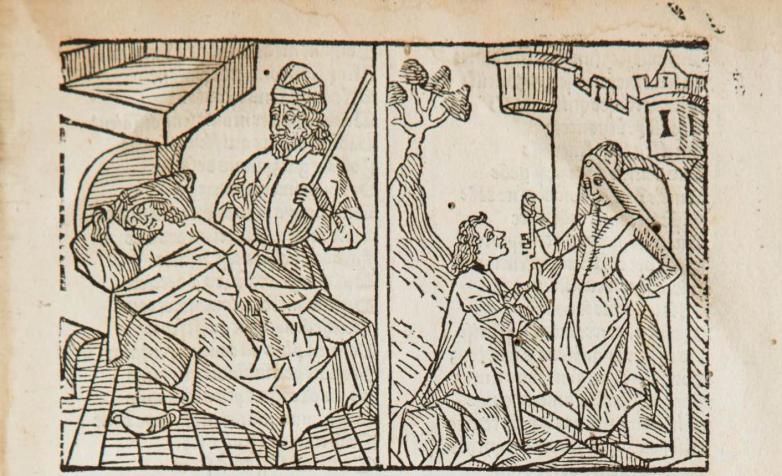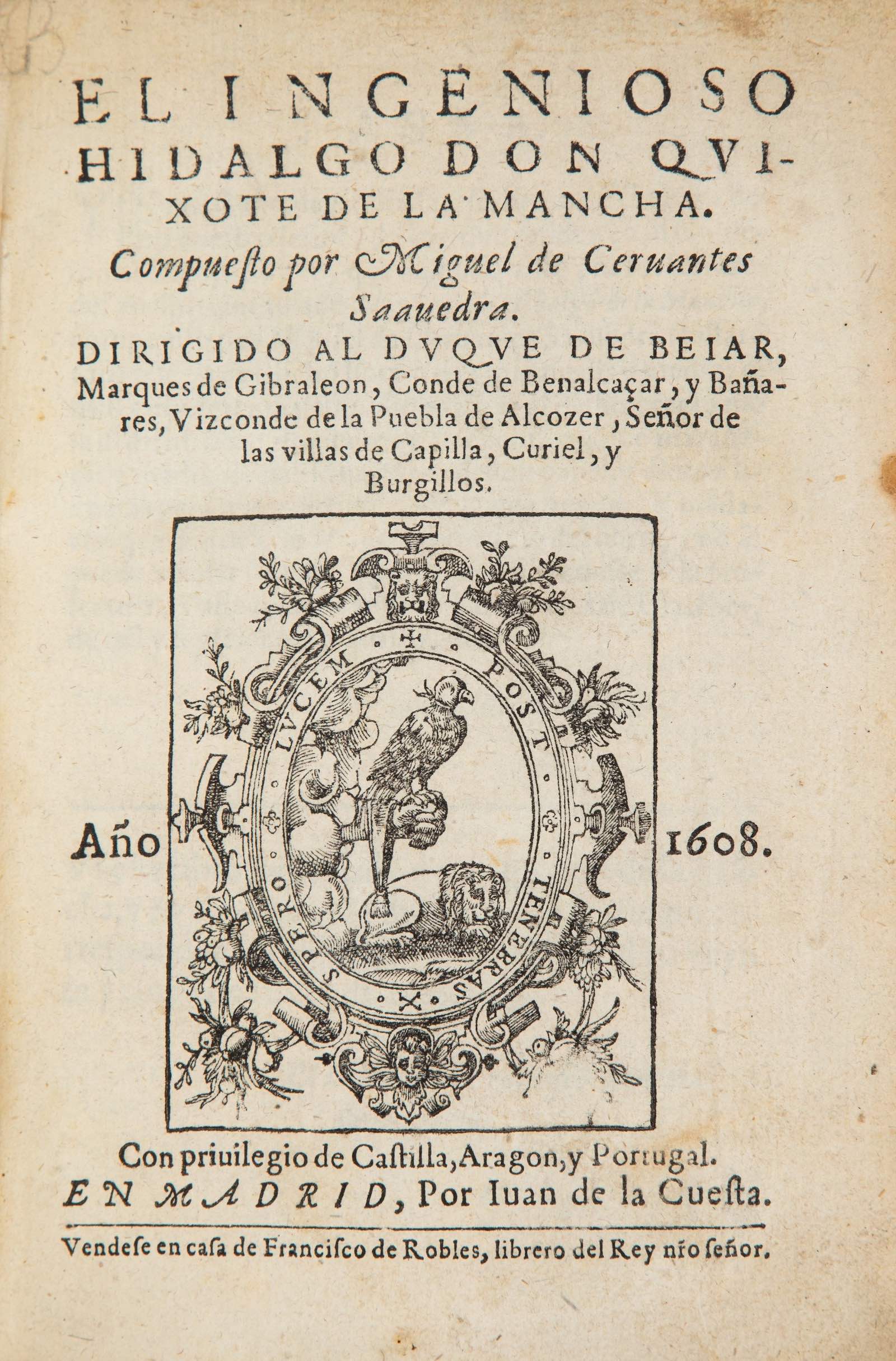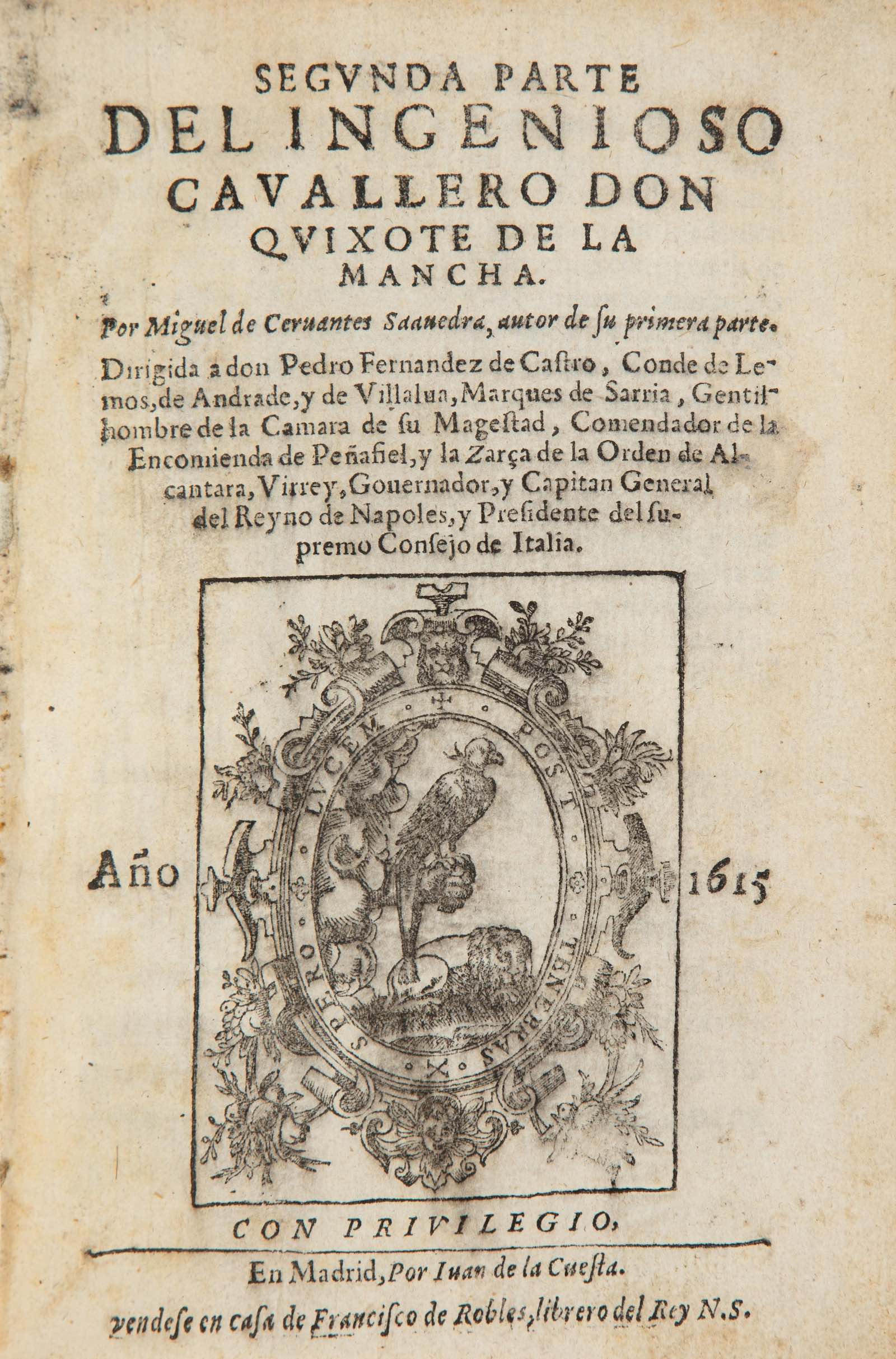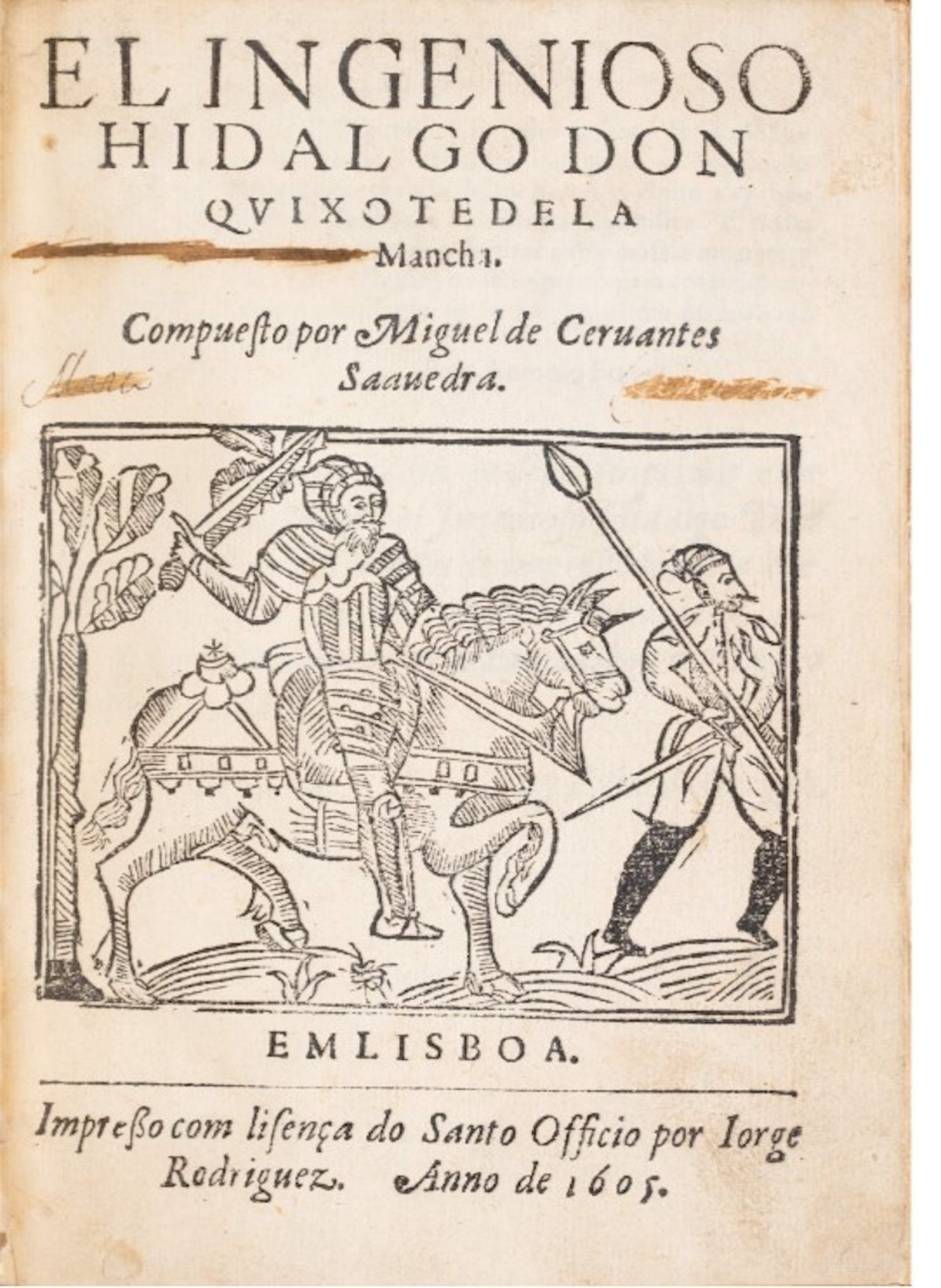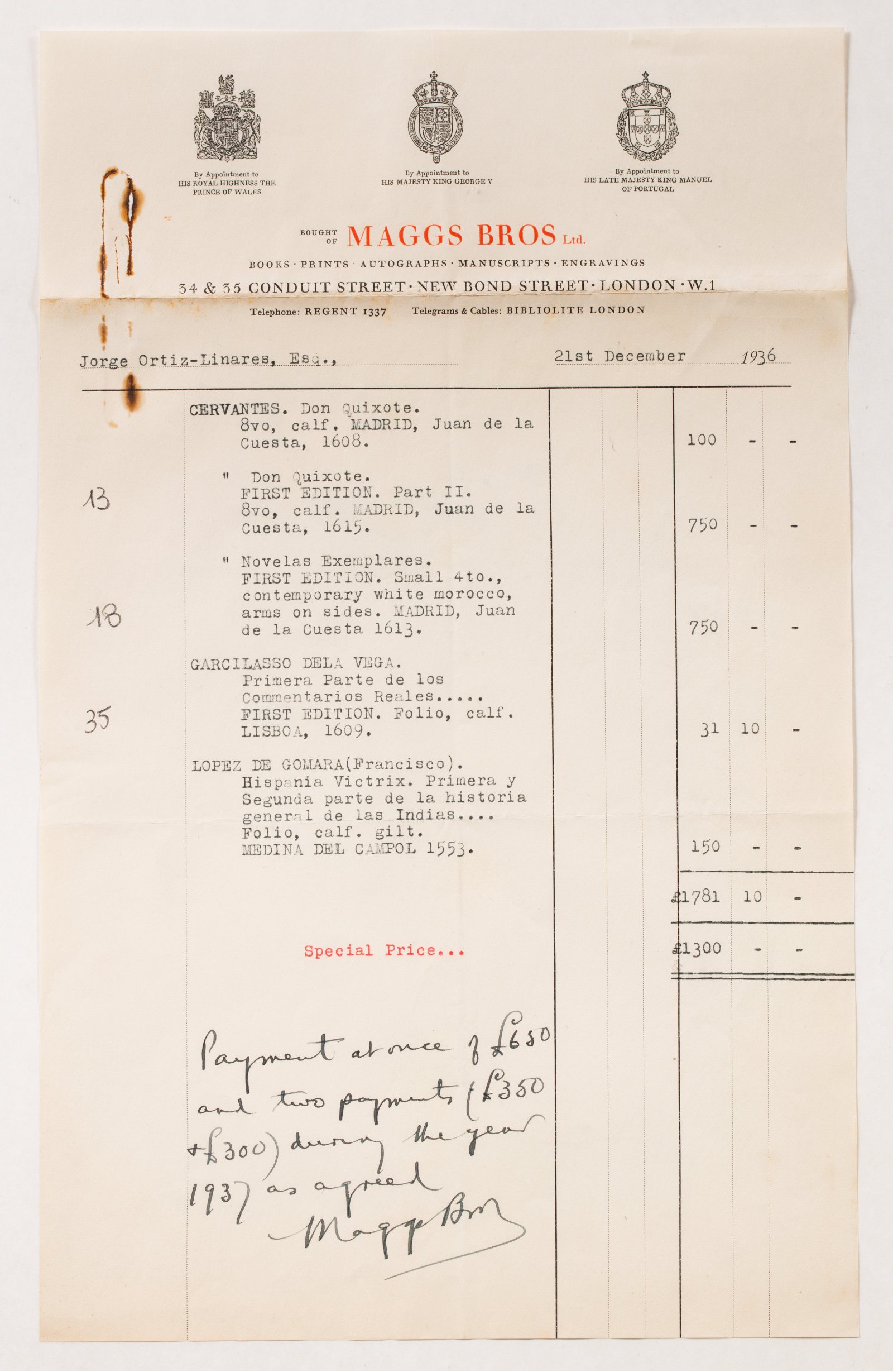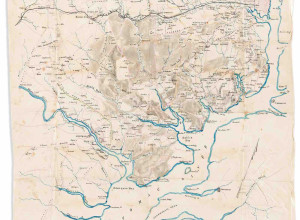The most recent chapter in the history of this copy of Don Quixote begins in London almost a century ago, in Maggs, bookseller to the Kings. In the early 1930s a young man – already a passionate collector, but unknown to the booksellers at the time – walked through the door of the shop for the very first time requesting to buy the great copies of Don Quixote. He left empty handed and was put on the waiting list.
A few years later, the phone would ring at Jorge Ortiz Linares’s Parisian mansion on 34 Avenue Foch. It was the same voice from Maggs: “We have a copy for your, Sir”. Ortiz crossed the Channel by plane, and returned to Maggs to buy these books on December 21, 1936. One of the greatest book collections of the 20th century was born. (The books had recently made their way to Maggs from the Escrick estate in Yorkshire, their home for the last 150 years, since they were acquired by the landowner Beilby Thompson (1742-1799), a keen collector of books and MP for Yorkshire.)
Ortiz was the Bolivian ambassador to Paris, a fitting owner for Don Quixote, a book so deeply rooted in the story of “the New World.” He was son in law of Simón Patiño, also known as “The King of Tin” or "The Andean Rockefeller", and one of the world’s wealthiest men of the 20th-century. The apartment he shared with his wife Graciella Patiño on 34 Avenue Foch during his long ambassadorship became one of the centres of artistic and high-society life. He passionately collected rare books and manuscripts from an early age, focusing on two areas: his native Hispanic-American world and French literature, in time building one of the great libraries of the age.
The Legacy of Don Quixote
The first part of Don Quixote was printed in 1605, and was mostly dispatched to “the New World” under the instructions of Cervantes himself. As was not unusual at the time, most were lost at sea in a shipwreck near La Havana, however approximately 70 copies reached Lima, from where they were sent to Cuzco in the heart of the Andes and the lost Inca Empire.
Like many writers of his time, Cervantes was fascinated by the stories of Europeans arriving the Americas, and even applied made an application to move there himself at one time. While Spain was colonising the area politically and economically, “the New World” was colonizing Spain imaginatively. In Don Quixote we see clear symmetry between the posturing figure of Don Quixote travelling across Spain astride a horse and the conquistadors invading the Americas.
Sotheby’s sale
From the collection of Jorge Ortiz Linares, Sotheby’s is to offer among the most desirable copies of both Book One and Book Two of Don Quixote:
For Book One: Ortiz purchased a copy of the third Madrid-based edition, published by Juan de la Cuesta in 1608, the great and last edition revised by Cervantes himself. While the first edition of 1605 edition was riddled with errors, the 1608 edition is considered the definitive edition of the author’s work.
For Book Two: Ortiz unearthed the original and very rare first edition released in 1615, and which would become an even greater success for Cervantes.
Both had been uniformly bound in England at the end of the 17th century for one of the great aficionados of the time, and they will be offered together with an estimate of €400,000-600,000
That same day in Maggs in 1936, Ortiz also purchased the very rare original edition of Cervantes Novelas of 1613, bound for Jérôme II Bignon (1627-1697), Grand Master of the King’s Library.
Together with Don Quixote, over eighty books from Ortiz’s magnificent library will be offered in a dedicated sale at Sotheby’s Paris on December 14th, with a special focus on books from France’s Grand Siècle - featuring rare literature with magnificent editions of Corneille, Descartes, Pascal, Racine, Molière and La Rochefoucauld. The shadows of two of the great booksellers of the 20th century hang behind this collection: Maggs of London for the Hispanic books, and the unforgettable Pierre Berès, for whom Jorge Ortiz Linares was one of the most loyal of customers.
The contents of the sale will first be on view in Sotheby’s galleries in New York (October 22 – 27), Madrid (November 7-8) and London (November 25- 30), before their exhibition in Paris (December 10-13).

